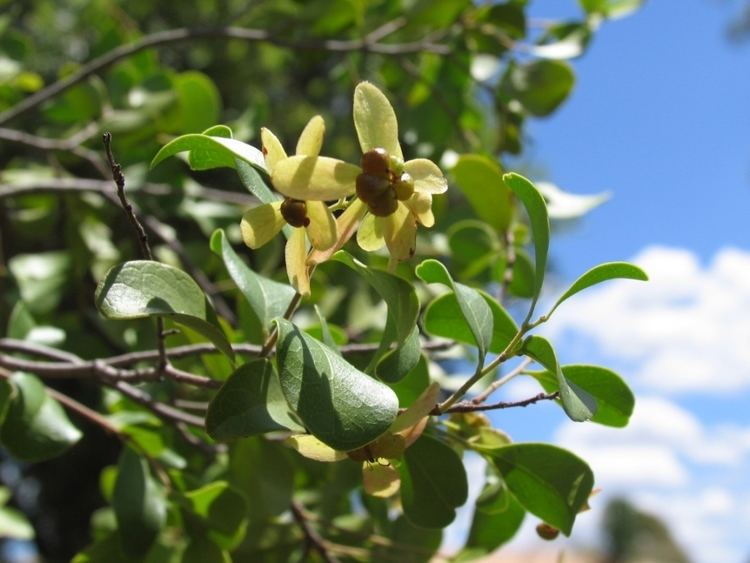Scientific name Cadellia pentastylis | Species C. pentastylis Rank Genus | |
 | ||
Similar Surianaceae, Stylobasium, Suriana, Acacia harpophylla, Notelaea microcarpa | ||
Cadellia llilca
Cadellia is a monotypic genus of trees in the botanical family Surianaceae. The sole species, Cadellia pentastylis, commonly known as ooline, is a medium to large tree with bright green leaves and rough tile-pattern bark. It has rain forest origins dating from the Pleistocene Era when much of Australia was wetter than it is today. It grows on moderately fertile soils, preferably those suited for agriculture or pasture development. Due to extensive forest clearing, it is now considered a vulnerable plant in Australia.
Contents
Imagen 027 cadellia africano
Description
The Cadellia tree grows to be about 10 m - rarely 25 m in height. It grows leaves that are alternate, undivided and obovate or "oval" in shape. From about October till December, the ooline tree also grows flowers that consist of five white petals, about 5–7 mm in length. To accompany the flowers, the ooline also grows a brownish, wrinkled fruit, that is surrounded by five red sepals at its base. This fruit is generally grown from November til December. The fruits edibility for humans is not stated.
Location
Cadellia pentastylis is listed as vulnerable under the Australian Environment and Biodiversity Conservation Act 1999. Small and typically fragmented stands of Ooline may be found in scattered localities on the lower western slopes of Australia's great dividing range between latitudes of 24ºS to 30ºS. Populations are known from the North Western Slopes of NSW, such as around Tenterfield, Terry Hie Hie, Gunnedah and Moree. Ooline can also be found in Sundown National Park and Tregole National Park in Queensland.
Horticulture
The Cadellia is one of four sections of the Fables clade. Its pollen is prolate spheroidal, striate with a granular aperture surface membrane. Pollen morphology has linked the Surianaceae in a clade comprising Polygalaceae, Fabaceae, and Quillaja. There are also strong genetic affinities between the Mexican endemic genus Recchia and Cadellia. These can be determined by different types of micropscopy, such as; light microscopy, scanning electro microscopy, transmission electro microscopy. [1]
